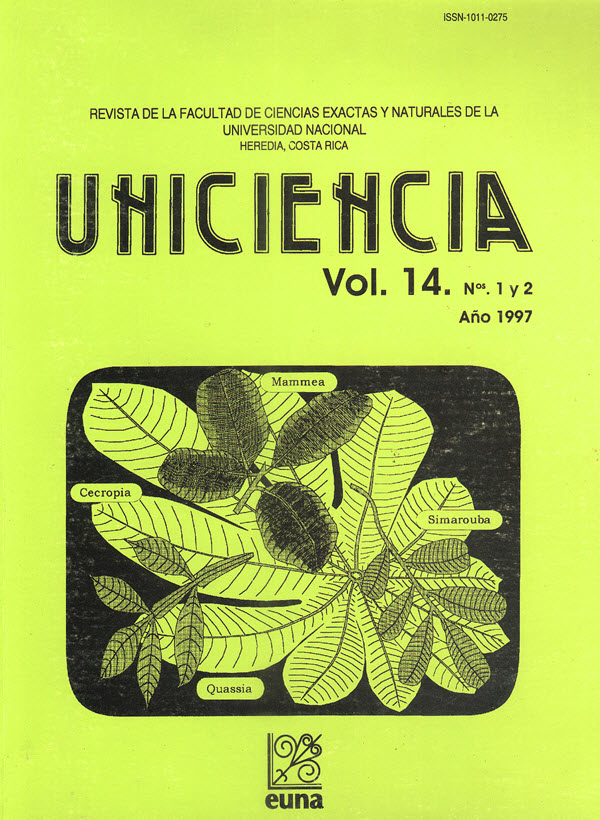Determinación del tipo de planta adecuado para el monitoreo de poblaciones de Fito nematodos en plátano (Musa AAB) (ING)
Abstract
On two plantations of first harvest of Musa AAB each consisting of separate lots of False Horn Plantain (Semi-Giant and Dwarf) nematode populations were determined in plants with one to three days flowering and in their respective succeeding suckers. The objective was to determine if there is a relationship between the nematode population in mother plants and their succeeding suckers. Sixty and twenty plants of each cultivar were evaluated in Pococí (70 masl) and Matina (40 masl) locations, respectively.
Nematodes were extracted by maceration of the roots, pouring the suspension through a series of 0.5/0.150/0.038 mm (N° 30/100/400 mesh) sieves nested together with the 0.5 mm on top. Populations levels were expressed per 100 g of roots.
The results showed no linear relationship between the nematode populations of the flowering plants and their succeeding sucker. Although the differences were not statistically significant, the densities of R. similis determined in flowering plants tended in most cases to overestimate the populations in the succeeding suckers. Sampling flowering plants at Pococí (70 masl) overestimated Helicotylenchus spp. populations in the succession suckers of both cultivars, while those at Matina (40 masl) were underestimated. The estimation of Meloidogyne spp. and Pratylenchus spp. populations was also not reliable.
To decide on nematicide applications, it is recommended to sample the succeeding suckers of recently flowering plants.
Downloads
Published
Issue
Section
License
Authors who publish with this journal agree to the following terms:
1. Authors guarantee the journal the right to be the first publication of the work as licensed under a Creative Commons Attribution License that allows others to share the work with an acknowledgment of the work's authorship and initial publication in this journal.
2. Authors can set separate additional agreements for non-exclusive distribution of the version of the work published in the journal (eg, place it in an institutional repository or publish it in a book), with an acknowledgment of its initial publication in this journal.
3. The authors have declared to hold all permissions to use the resources they provided in the paper (images, tables, among others) and assume full responsibility for damages to third parties.
4. The opinions expressed in the paper are the exclusive responsibility of the authors and do not necessarily represent the opinion of the editors or the Universidad Nacional.
Uniciencia Journal and all its productions are under Creative Commons Atribución-NoComercial-SinDerivadas 4.0 Unported.
There is neither fee for access nor Article Processing Charge (APC)






